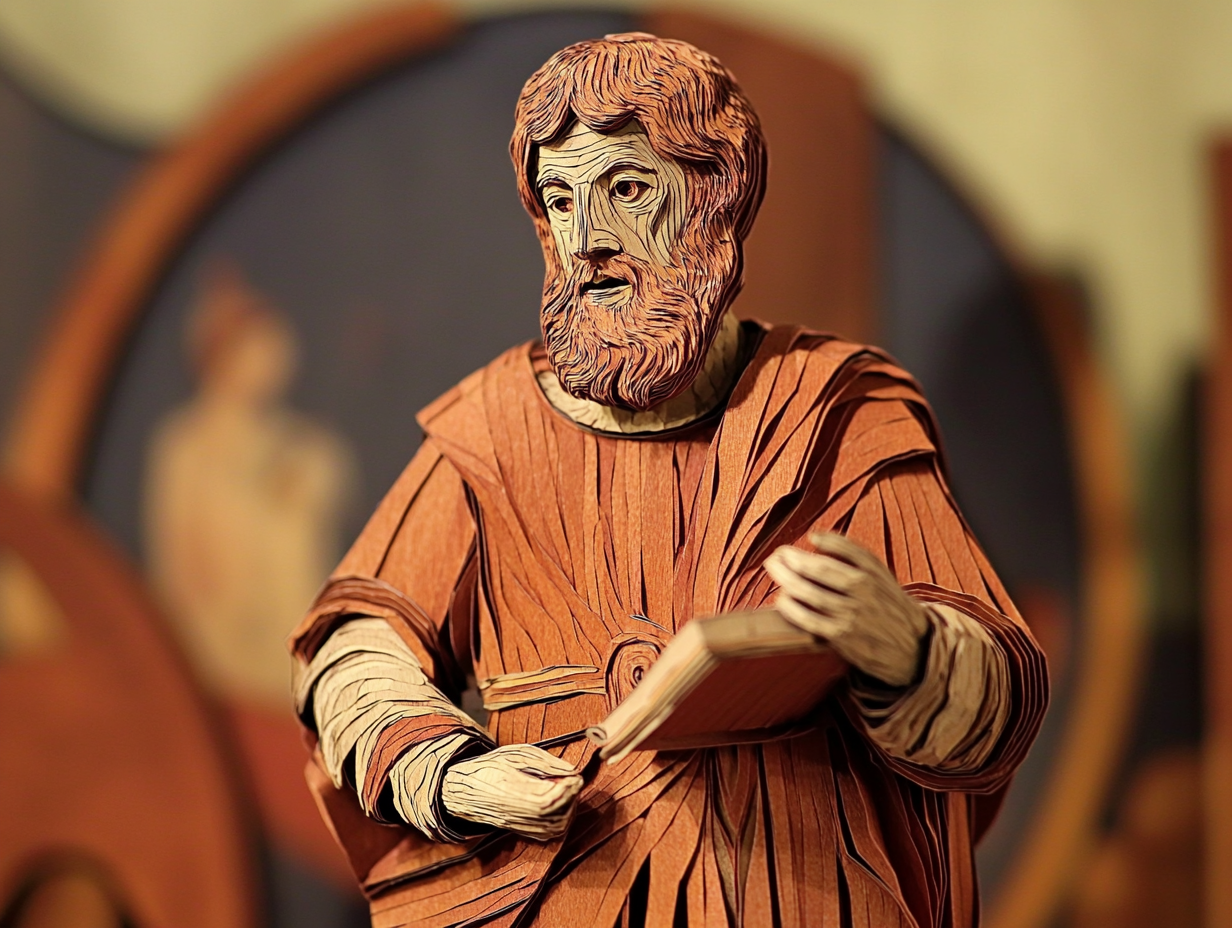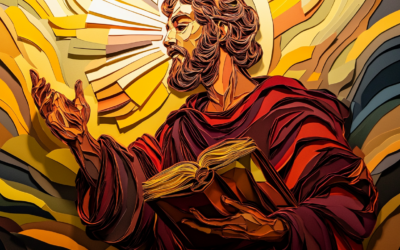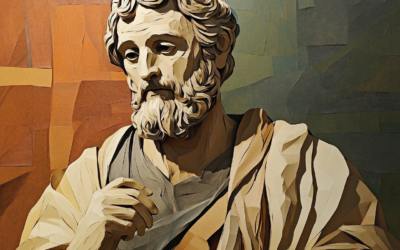John, the Apostle of Love: History, Teachings, and Legacy
John, son of Zebedee, was one of Jesus’ closest disciples and a key figure in the early Christian church. Known as the “Apostle of Love,” his writings and testimony shaped Christian theology profoundly. Unlike his brother James, who was the first of the Twelve to be martyred, John was the last to die, leaving behind a lasting theological and pastoral legacy.
The Identity and Background of John
John was the younger brother of James and the son of Zebedee, a Galilean fisherman. He was called by Jesus while mending his fishing nets with his father.
“And going on from there He saw two other brothers, James the son of Zebedee, and his brother John, in the boat with their father Zebedee, mending their nets; and He called them. Immediately they left the boat and their father, and followed Him.”
Matthew 4:21-22 (NASB)
John was part of Jesus’ inner circle, alongside Peter and James. He witnessed key events such as:
- The Transfiguration (Matthew 17:1-2)
- The raising of Jairus’ daughter (Mark 5:37-42)
- Jesus’ agony in Gethsemane (Matthew 26:36-37)
John and James were known as the “Sons of Thunder” (Mark 3:17), a nickname likely referring to their passionate and impulsive nature, as seen when they asked Jesus if they should call down fire on a Samaritan village (Luke 9:54).
John’s Teachings and Theological Emphasis
John is often called the “Apostle of Love,” a title drawn from his writings in the Gospel of John and his epistles. His theology emphasized:
The Love of God
“We love, because He first loved us.”
1 John 4:19 (NASB)
John’s writings stress that love originates from God and is the defining characteristic of true discipleship (John 13:34-35).
The Divinity of Christ
John’s Gospel opens with a direct affirmation of Jesus’ divine nature:
“In the beginning was the Word, and the Word was with God, and the Word was God.”
John 1:1 (NASB)
This verse shaped early Christology, influencing theological debates on the Trinity and the nature of Jesus.
The Call to Abide in Christ
“Remain in Me, and I in you. Just as the branch cannot bear fruit of itself but must remain in the vine, so neither can you unless you remain in Me.”
John 15:4 (NASB)
John taught that believers must live in continuous fellowship with Christ to bear spiritual fruit.
John’s Unique Role in the New Testament
The Beloved Disciple
John is frequently referred to as the “disciple whom Jesus loved” (John 13:23), emphasizing his close relationship with Christ.
The Guardian of Mary
“Then He said to the disciple, ‘Behold, your mother!’ And from that hour the disciple took her into his own household.”
John 19:27 (NASB)
Jesus entrusted His mother to John, highlighting his reliability and care.
The Author of Five New Testament Books
- The Gospel of John – A theological account emphasizing Jesus’ divinity.
- 1 John, 2 John, 3 John – Epistles focusing on love, truth, and warning against false teachings.
- Revelation – A prophetic vision of Christ’s return and final victory.
John’s Later Years and Death
Unlike the other apostles, John was not martyred. Early tradition states that he was exiled to the island of Patmos, where he received the visions recorded in Revelation.
“I, John, your brother and fellow participant in the tribulation and kingdom and perseverance in Jesus, was on the island called Patmos because of the word of God and the testimony of Jesus.”
Revelation 1:9 (NASB)
Death and Legacy
John, the son of Zebedee, somehow managed to do what almost none of the other apostles did—die of old age. While Peter was getting crucified upside down, and Paul was losing a date with a sword, John was writing, teaching, and outliving all his peers. By most accounts, he lived into his 90s, possibly dying around 100 AD in Ephesus, a city that had become an early hub of Christianity.
Unlike James, his brother, who was the first of the apostles to be martyred, John seemingly avoided execution, though not for lack of effort. According to tradition, the Roman authorities at one point tried to kill him by boiling him in oil, but he walked away unscathed. Either he had supernatural protection, or he was just that stubborn. Whatever the case, the authorities eventually exiled him to Patmos, where he received the visions that became the Book of Revelation.
His influence on Christian theology is hard to overstate. John’s Gospel, his three epistles, and Revelation all carry a distinct emphasis on love, truth, and the divinity of Christ. Unlike the other Gospel writers, who focused on parables, miracles, and historical narratives, John spent his time drilling down on theological depth. He gave us the high Christology of “In the beginning was the Word, and the Word was with God, and the Word was God”—a sentence that theologians have been unpacking ever since.
His letters carried a similarly weighty tone. If Paul was concerned with doctrine and James with works, John was all about love. “God is love,” he wrote, flatly stating one of the most quoted verses in Christian history. He emphasized that truth and love were inseparable, that knowing Christ meant both believing the right things and loving the right way.
John also played a crucial role in shaping the next generation of Christian leaders. His disciples, including Polycarp, would go on to teach men like Irenaeus, whose writings would combat early heresies and help form Christian orthodoxy. In this sense, John’s legacy stretched well beyond his own lifetime, influencing the theology of the church for centuries.
Though his exact burial site remains uncertain, the Basilica of St. John in Ephesus is traditionally said to mark his final resting place. Whether or not he’s actually there, his words remain. More than any other apostle, John ensured that his testimony didn’t just survive but thrived, shaping Christian thought from his time until now.
The Legacy of John
John, the son of Zebedee, left behind more than just a grave in Ephesus—he left a theological blueprint that shaped Christianity for centuries. His influence wasn’t just in what he wrote but in how his writings shaped the church’s understanding of love, truth, and the nature of Christ.
His Gospel alone has been a battleground for theological discussion since the ink dried. While the Synoptic Gospels (Matthew, Mark, and Luke) focused on Christ’s actions, John zeroed in on his identity. That opening line—“In the beginning was the Word, and the Word was with God, and the Word was God”—set the stage for debates that would rage through councils, schisms, and seminary classrooms for centuries.
Take the Council of Nicaea (325 AD), for instance. When church leaders gathered to deal with the Arian controversy—whether Christ was fully divine or a created being—it was John’s Gospel they leaned on. Athanasius, one of the council’s most vocal defenders of Christ’s divinity, cited John’s writings heavily, arguing that Christ was eternally God and not some lesser, created being. His battle cry? John 1:1. The Nicene Creed, still recited in churches today, owes much to John’s insistence on Christ’s divine nature.
Fast forward to the early church fathers—men like Irenaeus and Augustine, who saw John’s writings as foundational. Irenaeus (circa 180 AD), a student of Polycarp (who himself was a disciple of John), frequently referenced John’s Gospel in his work Against Heresies. He used John’s teachings to combat Gnostic interpretations of Christ, arguing that Jesus wasn’t some mystical being who only appeared human but was fully God and fully man. Augustine, in the 4th century, called John’s Gospel “the spiritual Gospel,” setting it apart as the deepest and most profound of the four.
John’s emphasis on love also shaped Christian ethics. When Thomas Aquinas, in the 13th century, wrote Summa Theologica, he leaned on John’s writings to define charity as the highest virtue. Martin Luther, during the Reformation, called John’s Gospel “the one, fine, true, and chief Gospel” and cited it constantly to emphasize faith in Christ over church traditions.
Even in modern times, scholars like N.T. Wright and Craig Keener have emphasized John’s role in shaping Christian thought. Wright points out that John’s eschatology—his understanding of the end times and Christ’s return—has influenced Christian hope for centuries. Keener, in his Gospel of John: A Commentary, argues that John’s writings present one of the clearest pictures of Jesus as the fulfillment of Old Testament prophecy.
John didn’t just write; he built a framework for understanding Christ that has lasted 2,000 years. His words have been cited in theological debates, defended in councils, and expounded upon by some of the greatest minds in church history. His legacy isn’t just ink on a scroll—it’s the foundation of how millions have understood God, truth, and love.
Sources and Further Reading
- The Holy Bible (NASB & KJV)
- Eusebius, Church History, Book 3, Chapter 23
- Irenaeus, Against Heresies, Book 3, Chapter 1
- Craig Keener, The Gospel of John: A Commentary
- N.T. Wright, The New Testament and the People of God
Scripture quotations taken from the (NASB®) New American Standard Bible®, Copyright ©, 2020 by The Lockman Foundation. Used by permission. All rights reserved. lockman.org









0 Comments